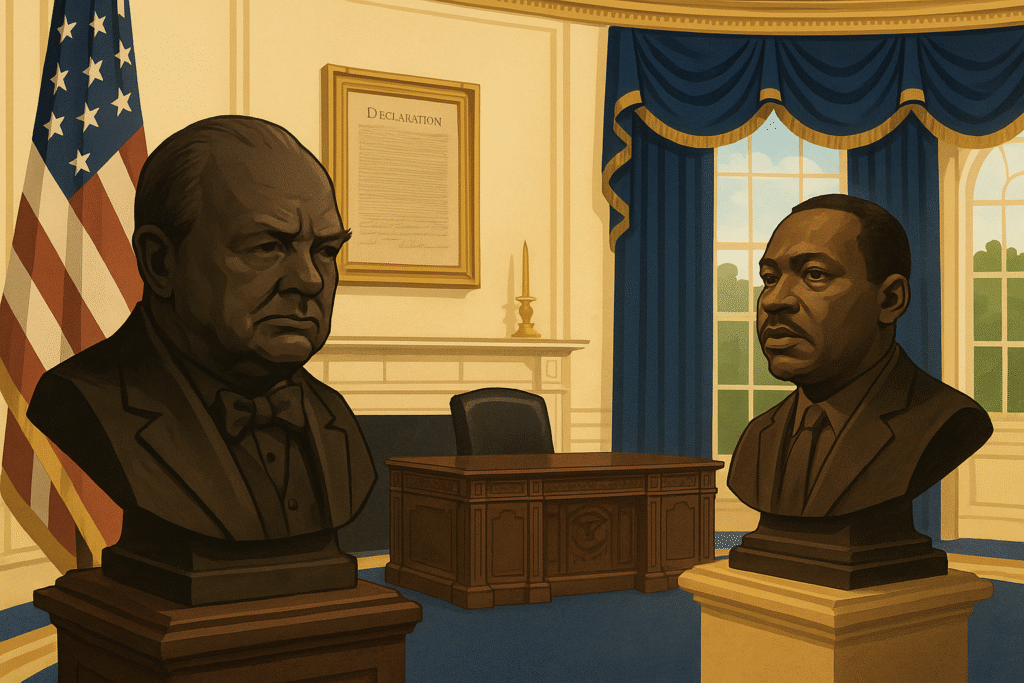Washington, D.C. — President Donald Trump has made a symbolic shift in the Oval Office by relocating the bronze bust of civil rights icon Dr. Martin Luther King Jr., originally placed there by former President Barack Obama in 2009, and reintroducing a bust of British Prime Minister Winston Churchill.
According to a White House official, the MLK Jr. bust, cast in 1970 by Black artist Charles Alston, has been moved to Trump’s private dining room adjacent to the Oval Office. The room is frequently used by the president for private meetings and staff lunches.
The redecoration of the Oval Office reflects several stylistic and symbolic changes. Gold accents now frame the doors and the fireplace mantel, and a framed copy of the Declaration of Independence has been mounted behind newly installed blue velvet curtains.
Churchill Bust Returns
In what officials describe as a fulfillment of a post-election promise, Trump reinstated the Winston Churchill bust, sculpted by Sir Jacob Epstein, to a prominent position in the Oval Office on January 20, his first day in office during his second term. The bust had also been displayed in the Oval Office during Trump’s first term.
Churchill’s likeness had been moved out of the Oval Office by Obama in 2009 and relocated to the Treaty Room on the White House’s second floor. At the time, Obama replaced it with the MLK Jr. bust, symbolically highlighting the civil rights legacy as part of his historic tenure as the first African American U.S. president.
History of the MLK Jr. Bust
The bust of Dr. King was commissioned by Rev. Donald Harrington for the Community Church of New York for $5,000, two years after King’s assassination. It was later loaned to the White House from the Smithsonian Institution and first placed in the White House library during President Bill Clinton’s second term in 2000. Obama moved the bust into the Oval Office in 2009, where it remained throughout his two terms and during Trump’s first term.
Broader Political Context
This change in décor arrives amid heightened political tensions between the Trump administration and civil rights groups. Earlier this week, the NAACP announced it would not invite Trump to its 2025 National Convention — the first time in 116 years that a sitting U.S. president has not been invited to the event.
The NAACP’s decision and Trump’s symbolic Oval Office changes are viewed by critics and supporters alike as reflective of the shifting cultural and political tone of the administration. As Trump enters his second term, these moves continue to spotlight how presidential aesthetics intersect with deeper themes of legacy, race, and historical memory.


